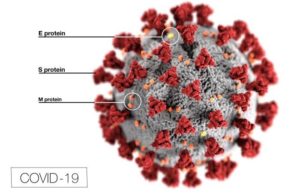April 10 2020
Richard Pilch
This article is part of World War “V”: The COVID-19 Pandemic, a collection of all CNS COVID-19-related articles..
April 10, 2020, marks the 48th anniversary of the signing of the Biological Weapons Convention (BWC). Though the primary focus of the BWC is weapons, the Convention also includes a commitment by States Parties to cooperate on preventing diseases like COVID-19. This article is dedicated to all those in the international community who have worked to make good on that commitment for nearly half a century. May we continue their legacy.
The global impact of COVID-19 is neither new nor unexpected. History is flush with examples of civilizations shaped by infectious diseases, and globalization may be implicated in many of the most notable. Two such examples immediately come to mind: Cortez’s inadvertent introduction of smallpox to a virgin Aztec population, and the deliberate (but arguably inevitable) introduction of smallpox to American Indian populations during the French and Indian Wars. Thus, while often regarded as a relatively recent phenomenon, globalization has long been a factor in the transmission and severity of infectious diseases. But the speed and breadth of 20th and 21st century globalization has increased both the speed at which infectious diseases spread as well as the potential for cohesion within the global health community challenged with preventing it. The COVID-19 pandemic offers a unique opportunity to build bridges through public and veterinary health, which transcend a unified vision of mutual well-being to engender far-reaching partnerships based on cooperation and, ultimately, trust.

Flags of member nations at the United Nations Headquarters, seen in 2007 (Src: Aotearoa, Wikimedia Commons)
The examples provided above touch upon the potential effect of globalization on infectious disease outbreaks of both natural and deliberate origin. With respect to preparedness efforts, etiology matters little. We prepare for natural outbreaks—whether caused by a bacterium with limited potential for spread or a virus capable of sparking a pandemic—and deliberate outbreaks in the same way: through capacity-building, risk communication, and vigilance. In short, we address perceived vulnerabilities. When considering deliberate outbreaks, however, we know that there is more to the equation. The US Department of Homeland Security formula Risk = Vulnerability x Threat x Consequence suggests that a Threat dimension—defined as the product of capability and intent—must also be considered. To establish the capability to mount a biological attack, four hurdles must be overcome: a pathogenic (or toxigenic) strain of a biological agent must be acquired; a sufficient amount of the agent (or toxin) must be produced; the agent must be formulated for stability and effectiveness during storage and delivery (not an absolute requirement); and the agent must be successfully delivered. Accordingly, a capability may be boiled down to three primary assets: pathogens, infrastructure, and expertise.
Historically, the attempted acquisition of pathogens has primarily targeted (a) the environment and (b) the laboratory, both of which may be addressed via international partnerships: the former via integrated surveillance, detection, and reporting, the latter via elimination, consolidation, and safety and security. The infrastructure and expertise necessary to establish a biological-weapons capability is widespread in laboratories and industry because of its dual-use nature, meaning that the same materials and thus knowledge utilized for peaceful purposes may be diverted toward illicit ends with relative ease. Therefore, in the absence of such highly suspect signatures as blast chambers and field-testing facilities, we must be able to gauge intent in order to distinguish between legitimate and illegitimate activities. International partnerships offer a mechanism for doing so by providing direct and often hands-on insight into such activities, and further ensure that dual-use assets remain dedicated toward the global health problems of today, effectively turning a potential risk into a benefit.
My vision of future partnerships in the life sciences is admittedly ambitious because I believe we must engage on all of these points. My vision involves the development of a robust global surveillance and detection network, with reporting to regional and international stakeholders and support provided as needed in return; it involves consolidation, safety and security; it involves collaboration and transparency. But there is no metaphor here for the Tower of Babel. Ideals may differ, and cultures may clash, but we still have a common language among us—the language of science. And this common language makes such a vision achievable, with the potential for even greater rewards.
Dr. Richard Pilch is Director of the Chemical and Biological Weapons Nonproliferation Program, James Martin Center for Nonproliferation Studies, Middlebury Institute of International Studies at Monterey.
See Also
 World War “V”: The COVID-19 Pandemic
World War “V”: The COVID-19 Pandemic
A collection of all CNS COVID-19-related articles
